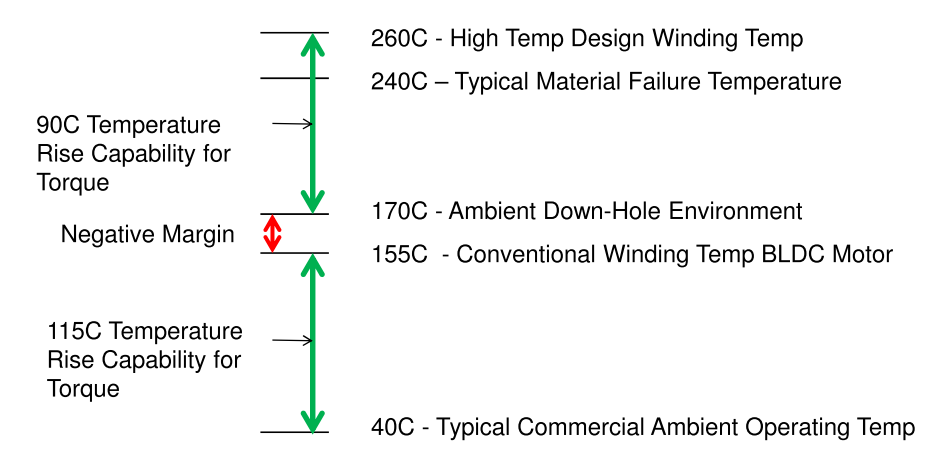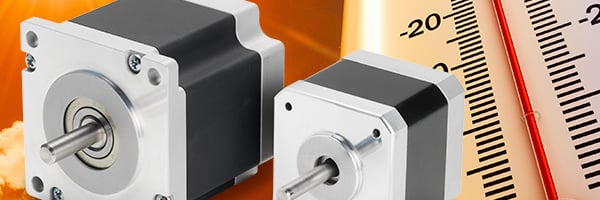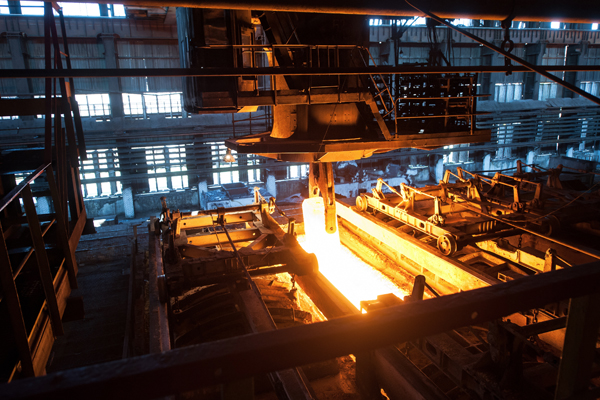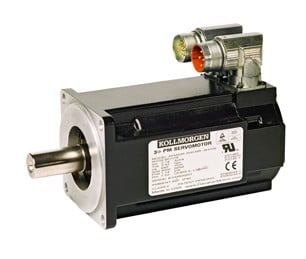There is a lot of energy [pun intended, sorry] going into the design of next generation, high temperature, Down-Hole motor technology at Kollmorgen.
The existing motor technology available in the marketplace has basically been the same since the inception of brushless motor for Down-Hole use by Kollmorgen back in 1986. Sure, the magnet technology has improved; giving us higher performance Samarium Cobalt magnets that hold up great in the high temperature extremes of the Down-Hole environment, but the basic insulation systems and motor materials haven't changed much.
Let's take a quick look at the basic temperature limitations of the brushless motor technology as summarized in the figure below.
Typical winding temperature limitations for industrial and commercial use BLDC motors are at 155C (degrees centigrade). These motors are most often used in applications that operate at 25C to 40C ambient conditions. The 130C to 115C temperature rise capability of a conventional motor allows for the losses that are creating heat while producing usable torque and speed for use in the application.
Historically, typical Down-Hole BLDC ambient operating conditions are up to 170C.
This leaves negative operating margin for a conventionally designed brushless motors in the Down-Hole environment. In order to produce usable torque at 170 C, the motor winding must be able to operate at a significantly higher temperature compared to the ambient.

At an operating ambient of 170C, this still allowed for a design temperature rise in brushless motors of 50C to 70C before the failure point and loss of reliable motor performance. Notice that at a winding temperature of 240C, many of the historic materials used in "high temperature" motor designs have reached failure point.
This would not be a big problem if it weren't for the push for deeper and hotter Down-Hole operating ambient temperatures. This, coupled with a trend towards higher and higher MTBF requirements, has led Kollmorgen to develop some new high temperature motor designs. These new motor designs employ state-of-the-art insulation material science, new manufacturing processes, and innovative design features that allow our motors to perform to winding temperatures of 260C and beyond.
This represents a significant increase in the torque and speed performance for these brushless motors at the old ambient temperature conditions up to 170 C and allows for an even greater margin of improved MTBF at any working ambient temperature for these motors.
Higher ambient temperature performance, and/or, significantly improved reliability…
Sounds like a reason to check out the next generation of high temperature, brushless motors for your Down-Hole or other hot ambient environment motor requirement.
Check out my next discussion on the high temperature and pressure influences on the choices for motor feedback …









